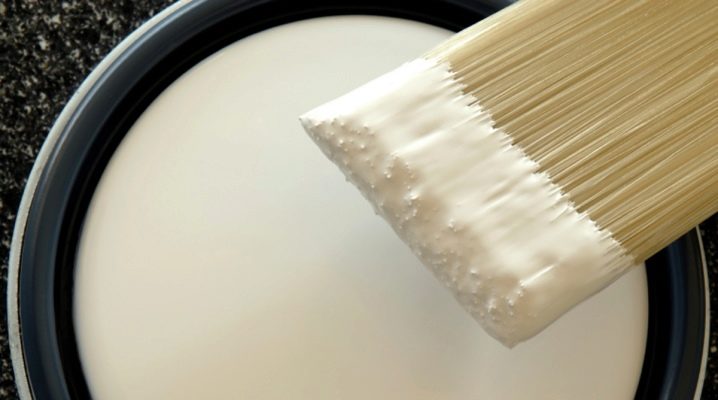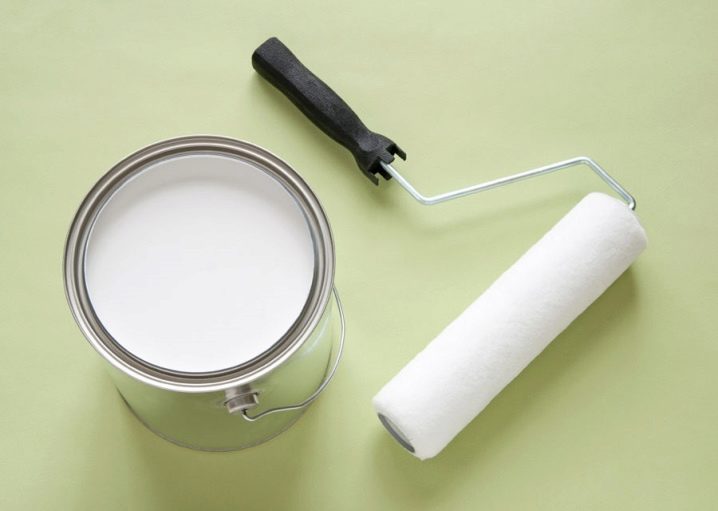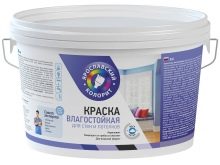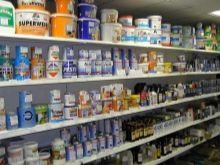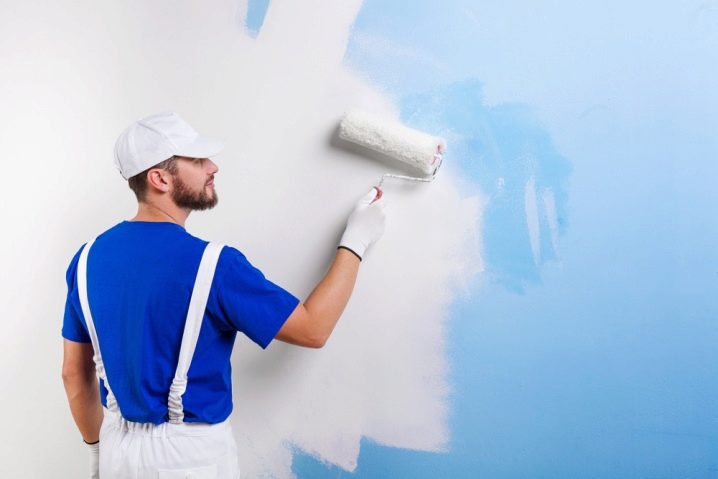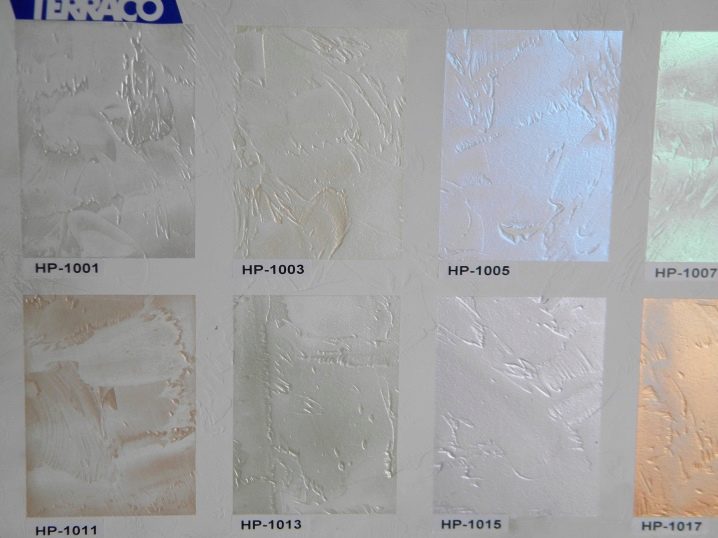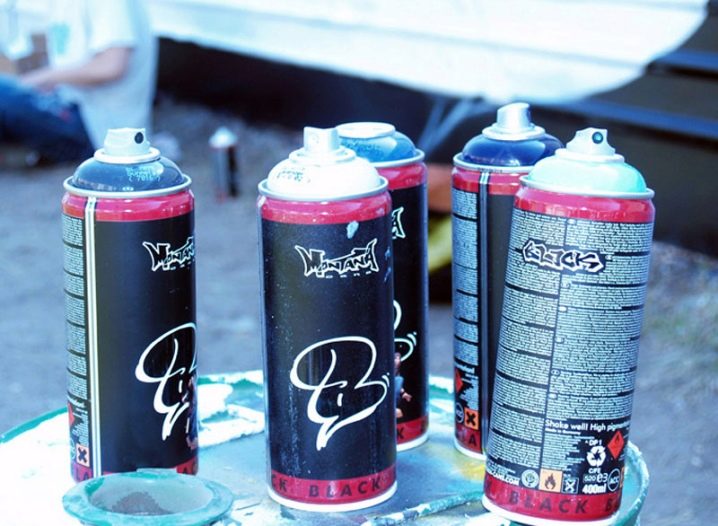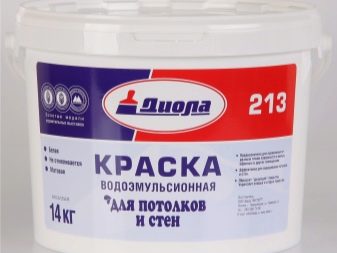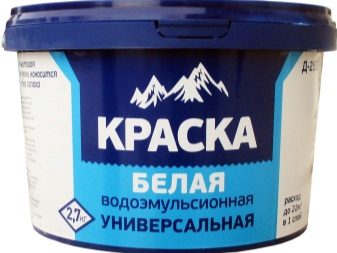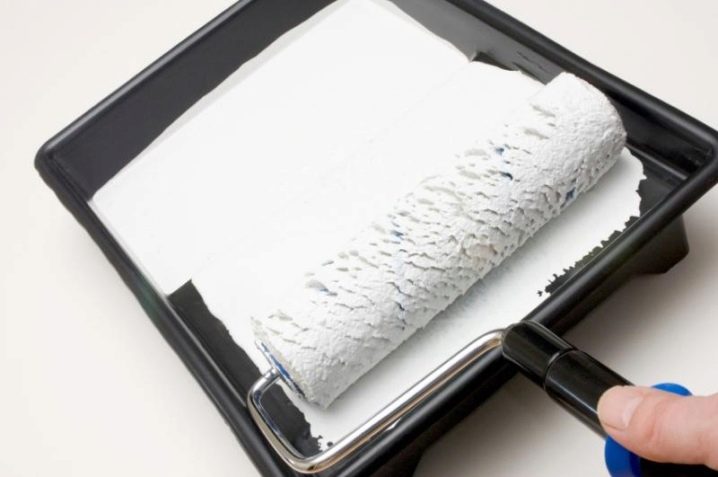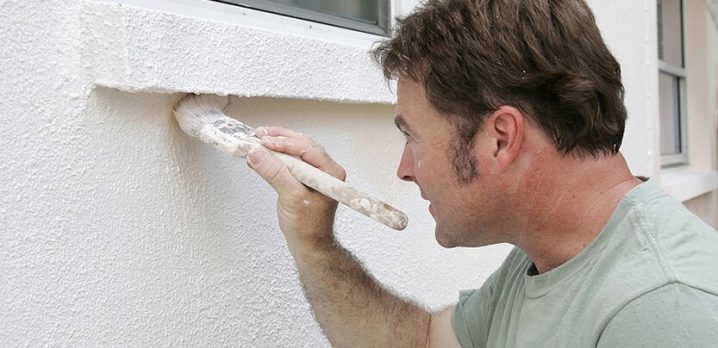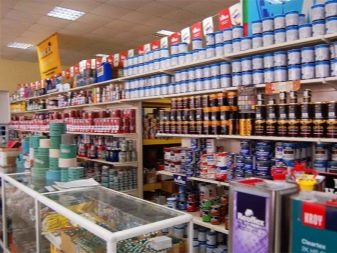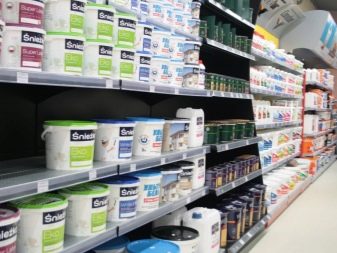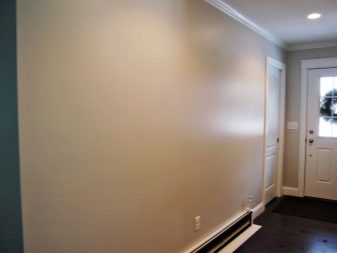White acrylic paints: rules of choice
White acrylic paints are considered one of the most versatile and popular for finishing various surfaces. Suitable for covering walls, ceilings, batteries, communications pipes, fit well on wallpaper, wood panels, plastic. Used for building facades, exterior concrete, reinforced concrete structures.
Acrylic blends lack a strong odor, they are non-toxic and do not contain flammable substances.
The main characteristics include:
- moisture resistance - suitable for rooms with high humidity;
- immunity to temperature extremes - they are not deformed, do not change their properties;
- wear resistance - the outer layer is resistant to external influences;
- profitability - have a lower consumption compared with other paints and varnishes (LKM).
Composition and properties
Acrylic paints produce water-based - water-dispersion and water-based. Aqueous dispersions are dissolved exclusively by water, emulsions are an organic solvent, they contain white spirit. The average time of drying of one layer lies within the limits - from 40 minutes to an hour.
The mixtures consist of several coloring materials.based on solids and polymers. The value of "grinding" (dispersion) determines the quality of the paint, affects the smoothness of the painted surface, color saturation and hiding.
Consumption, with full overlap of the old color with a new composition, is from 200 to 400 ml per 1 square meter.
According to the original whiteness, they are distinguished: superwhite, white, milky and some other shades. The purity of color is determined by the degree of purification of the main elements - chalk, talc or marble flour.
The higher the degree of purification, that is, several cycles are carried out, the brighter and brighter the color. It is especially important to pay attention to this information when choosing paint for ceilings.
To give special properties, the mixture is filled with special substances.For example, to increase the speed of drying add sikkativa, and with an increase in the fire-fighting characteristics of the coating - flame retardants, which impede the burning process.
Washable ability of the wall is provided by the presence of acrylic paint. But you should not use strong abrasives for cleaning, the strength of the coating involves the use of only soap solution.
Kinds
Acrylic paints are produced in the form of enamels, varnishes, paints and aerosols. Applied to all types of surfaces, except the floor. Often heat-resistant white enamels cover pipes, stoves and batteries. Aerosols are used to paint surfaces of small area.
The classification is extensive:
- to destination - for internal or external work on the street;
- by type of surface - for wood, brickwork, metal, concrete, etc.:
- on properties - universal, water-repellent, heat-resistant;
- as the outer layer - glossy, matte;
- in composition - acrylic-silicone (matt, for outdoor use), styrene-acrylic for painting facades, vinyl-acrylic (super-white, universal).
Popular emulsion mix,which is made from special acrylic resins. It is ideal for painting walls in public buildings or in wet areas. Well fits on different types of surfaces: concrete, plaster, drywall. It has a low degree of wear.
Interior paint - the leader among universal mixes. Often creates a matte outer layer.
Easy to apply:
- on already plastered walls;
- concrete or brick;
- moisture resistant drywall;
- Chipboard, fiberboard;
- oil or alkyd base;
- metal pipes.
Do not neglect the recommendations of the manufacturers.
Marking "for walls" or "for ceilings" implies a different composition and technical characteristics of the product.
A special group consists of structural paints. Receive them by mixing a dispersed or emulsion base with special pastes or powders. Additives do not affect the change of properties, only give a relief or texture of the surface. The walls can feel like sandpaper, due to the special particles have a fluorescent or flickering effect.
Selection rules
Selecting the desired paint, first of all, focus on the purpose of the room and the surface feature.Some compounds are adapted to high humidity, others, heat-resistant, designed only for batteries. For white mixtures, an important indicator is the reaction to exposure to ultraviolet radiation, when it comes to repairing a room located on the sunny side.
Gloss effect
Usually used to increase the illumination of the room and children. Glare creates airiness, and a small reflectivity increases the space of the room. Glossy walls in the kitchen and in the bathroom will help to hide the inevitable traces of spray and facilitate wet cleaning. Do not forget that the composition of paints for these premises should include antifungal and moisture-proof components.
The main condition for creating a radiant effect is a perfectly smooth state of the painted surface.
Gloss makes visible the smallest roughness and irregularities. The same conditions are necessary when using acrylic lacquers, enamels with pearlescent or metallic luster.
Matte coating
Hides minor imperfections in the structure of walls and ceilings. White color allows you to visually increase the size of the room.Unfortunately, the coating structure reveals traces of contaminants that are more difficult to wash off.
Matte paints are widely used for decoration of living rooms, offices. For bedrooms, they are also selected with increased moisture absorption - vapor permeability.
Before you start painting, be sure to thoroughly study the instructions. Despite the fact that the paint is safe for the skin, it is best to use protective gloves.
You will learn about the features of acrylic paint in the following video.
